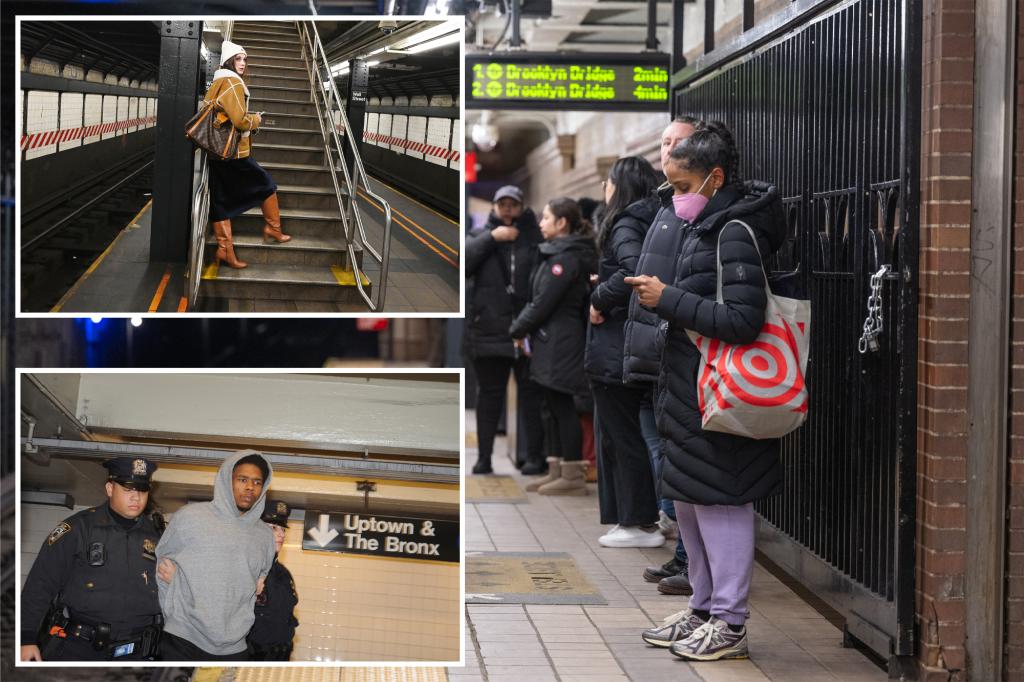The specter of random violence has cast a long shadow over the New York City subway system, transforming the once-familiar landscape of bustling platforms into scenes of quiet apprehension. A new, unsettling normal has emerged: the platform wallflower. No longer casually milling about or jostling for position, riders are increasingly adopting a defensive posture, clinging to the platform walls as they await their trains. This phenomenon, born out of a fear of being shoved onto the tracks, is a stark reflection of the anxiety gripping the city’s commuters. From uptown to downtown, across Manhattan and into Brooklyn, this cautious behavior has become a ubiquitous sight, indicative of a shared sense of vulnerability in a space once considered a vital artery of the city.
Observations across multiple stations during peak hours paint a vivid picture of this new reality. At stations like East 86th, East 77th, East 68th, East 59th, and East 51st Streets, as well as West 18th Street, 14th Street-Union Square, and Wall Street, riders are seen consciously distancing themselves from the platform edge. Hundreds of commuters press their backs against the tiled walls, creating a human barrier between themselves and the tracks. This self-preservation instinct, driven by a fear of random attacks, has become an unspoken rule of subway etiquette, a silent acknowledgment of the potential dangers lurking beneath the surface of daily commutes. This collective act of retreat speaks volumes about the erosion of a sense of safety in a public space that millions rely on daily.
The shift in rider behavior is not merely anecdotal; it’s rooted in a series of disturbing incidents, particularly the near-fatal attack on Joseph Lynskey at the West 18th Street station on December 31, 2023. Lynskey was shoved onto the tracks by a stranger, a stark reminder of the unpredictable violence that can erupt without warning. This incident, and others like it, have resonated deeply with commuters, forcing them to confront the possibility of becoming the next victim. The fear isn’t limited to ordinary citizens; even MTA board member Lisa Daglian admits to taking precautions, prioritizing safety over convenience when navigating crowded platforms.
The ripple effect of these incidents extends beyond individual anxieties. It has fostered a climate of hyper-vigilance, where commuters are constantly scanning their surroundings, assessing potential threats, and adjusting their behavior accordingly. Riders like Mariana Castillo, who witnessed the aftermath of the West 18th Street attack, now avoid wearing headphones and maintain a safe distance from the platform edge. Others, like Tanner Crochet, consciously position themselves near police officers whenever possible, seeking a sense of security in their presence. This heightened awareness, while understandable, underscores the psychological toll of living under the constant threat of violence.
The fear of being pushed onto the tracks is not unfounded. While statistically rare, the consequences of such attacks are often severe, even fatal. The perceived randomness of these incidents further amplifies the anxiety, making it difficult for riders to predict or prevent them. Sheila Rodgers, a seasoned subway rider, avoids standing near platform entrances, fearing an attack from someone entering the station in a fit of rage. This fear, echoed by many others, transforms the simple act of waiting for a train into a calculated exercise in risk assessment.
The phenomenon of the platform wallflower has permeated the public consciousness, finding its way onto social media platforms like X (formerly Twitter) and Instagram. Photos depicting rows of commuters huddled against station walls have gone viral, serving as visual testaments to the pervasive fear gripping the city. These images, shared and reshared thousands of times, have sparked conversations about the deteriorating state of safety in the subway system and the psychological impact of living under the constant threat of violence. The viral nature of these images underscores the widespread resonance of this issue, transforming individual anxieties into a collective expression of fear and frustration. The digital amplification of this phenomenon further highlights the need for tangible solutions to address the underlying causes and restore a sense of security to the city’s vital transportation network.

